- Home
- Leo Tolstoy
The Death of Ivan Ilyich and Other Stories Page 2
The Death of Ivan Ilyich and Other Stories Read online
Page 2
In August Tolstoy set off for the distant province of Penza in the hope of buying some land, and broke his journey in the small town of Arzamas. During a sleepless night he was suddenly seized with dread. He described the feeling to his wife as follows:It was two o’clock in the morning. I was exhausted. I wanted to go to sleep, and I felt perfectly well. But suddenly I was overwhelmed by despair, fear and terror, the like of which I have never experienced before ... such an agonizing feeling ... God preserve anyone else from experiencing it.2
Eleven years later he recalled the occasion in an unfinished work of fiction, Notes of a Madman: I had hoped to get rid of the thing that was tormenting me in the room. But it came out behind me and everything turned black. I became more and more frightened. ‘This is ridiculous,’ I told myself. ‘What am I afraid of?’
‘Me,’ answered Death. ‘I am here.’3
Tolstoy’s spiritual agony at this time cannot be overstated. He never fully recovered from this shocking encounter with death. His dark thoughts on suffering, death and the meaningless of life itself stayed with him and were reflected in much of his subsequent work, particularly the last sections of Anna Karenina (1878) and the whole of A Confession (1884). The multiple irony in the distressing circumstances of 1869 is striking. First: within a few months of completing the world’s most life-affirming novel he becomes obsessed with dying and death. Second: Schopenhauer’s philosophy is so black that it sees life as nothing but suffering, a constant striving without any satisfaction; death, then, should be warmly anticipated as a welcome release. Yet the knowledge of death, far from providing a soothing promise of relief, ruins what small happiness can be found in living. Third: although Tolstoy couldn’t have known it, at the time when he was being addressed so ominously by the voice of death, his life was actually at its meridian. He had lived for forty-one years, and had another forty-one still ahead of him. At that time, incidentally, the expectation of life in Russia stood at forty-one years.
DEATH IN THE MIDST OF LIFE
The Book of Common Prayer reminds us solemnly that ‘in the midst of life we are in death’, and until recent times that used to be true in a literal sense: all families experienced death repeatedly at first hand. Tolstoy’s was one such. Death visited his home at regular intervals; for instance, five of his children did not survive childhood, and in one short period, 1873 — 5, five family members died. He saw men shot or blown up on the battlefield, watched a man die under the guillotine blade in France, and sat with his brother until he died from consumption. All of this must have been very painful, but it is probably more significant that Tolstoy’s own childhood was badly affected by the death of his mother when he was two, his father when he was nine, a devoted grandmother when he was ten, and his doting Auntie Tatyana when he was thirteen. True, he was loved and protected throughout by family members, but perhaps the early loss, one after the other, of four parental figures instilled into him a particular sense of the fragility of human life and a sharper than normal fear of death. Mortality would become one of this writer’s most persistent themes, as he worked against the idea attributed to Samuel Johnson that our fear of death is so great that the whole of life is but keeping away the thought of it. All of the stories in this volume are connected by this preoccupation, along with the author’s simultaneous attempts to help us improve our lives. However, far from being overt morality pieces, they are all gripping narratives, and should be enjoyed as such before being examined for lessons in living and dying.
But this volume is only a representative selection of Tolstoy’s writing on the subject. The idea of death haunts his work from Childhood in 1852 to Hadji Murat in 1904 and Alyosha the Pot in 1905. The Sevastopol Stories (1855 — 6), transmitted straight from the Crimean warfront, necessarily pile up the corpses of soldiers, many of which Tolstoy saw with his own eyes on the battlefield. The vitality of The Cossacks (1863) is undermined by the suffering of the story’s mortally wounded hero, Lukashka. In War and Peace the deaths of old Count Bezukhov, Lise, Hélène, Andrey, Count Rostov, Petya Rostov and Platon Karatayev bring particular poignancy to the subject that has been generalized in thousands on the field of war. And in Anna Karenina the famous suicide of the heroine is hardly more moving than the death of Nikolay, brother of the novel’s other protagonist Konstantin Levin, which is itself a transcription from the real-life demise of Tolstoy’s own brother. This occurs in Part Five, Chapter 21, the only one out of the 734 chapters that make up the three longest novels of this author to be given a title, Death. The Kreutzer Sonata (1889) examines sexual passion that has culminated in a gruesome murder. ‘Master and Man’ (1893) ends in the self-sacrificing death of a man who has hitherto been the epitome of calculating egoism. In Resurrection (1899) the story hinges around another murder, the poisoning of a prostitute’s client. In a play of 1886, The Power of Darkness, there is another poisoning, though this is transcended in awfulness by a rare example of nothing less than infanticide on stage. It is all there - death in every conceivable guise: murder, accident, suicide and natural causes, finishing off the young, the old and everyone in between. Even from this kind of brief overview it is clear that Tolstoy’s obsession with death and dying is something out of the ordinary; few serious writers come near him in persisting with this difficult subject and presenting it from so many different angles.
THE LIFE OF IVAN ILYICH
It is ironical that The Death of Ivan Ilyich, one of the world’s most penetrating fictional examinations of the sick room and the deathbed, was handed to the author’s wife as a pleasant surprise on her birthday. Far from being disturbed by the shocking content of the story, Sonya was delighted. First, she welcomed this new work, handed to her when she returned from a stay in Moscow, in 1882, because of its symbolic value. According to her perceptions, her husband had been indulging himself ever since Anna Karenina three years earlier by fiddling around with second-rate works of philosophy, morality and religion that no one wanted to read. The appearance of a new work of fiction, even if it had death in its title, seemed more like a resurrection to her. Second, she was a sensitive critic of her husband’s work, and she knew a masterpiece when she saw it. Her husband may have been in his sixth decade, but he was obviously not written out or even declining in literary ability. Third, this piece would nicely enhance the Collected Works that she was working on. Finally, practical woman as she was, Sonya could hardly have been indifferent to the prospect of new royalties coming in.
There is something unusual about this story from the outset. The title of the tale announces its ending. To emphasize this, we are barely a hundred words into the narrative when we are told, ‘Gentlemen, Ivan Ilyich is dead.’ So much for suspense. At no stage in the succeeding pages are we going to entertain doubts about the protagonist’s fate, which has been settled and sealed. Clearly, no time will be lost worrying about whether a sick man is going to die or survive; the interest must be elsewhere - in the process of dying, and the life that is being left behind. And that is how things turn out; what is at stake is the life of Ivan Ilyich. And by shifting the emphasis of his story like this Tolstoy lays down a benefit for himself as narrator; he can now allow himself to get right into the nasty details of dying, death and decomposition without facing a charge of prurience. An author who has renounced suspense cannot be said to be gratuitously milking gruesome material for every last drop of horror.
The idea for this story came from real life. In Tula, the nearest town to Tolstoy’s estate, a judge by the name of Ivan Ilyich Mechnikov had died from stomach cancer the previous year (July 1881), young and in mid-career. Tolstoy had been used to meeting some of the wretches sentenced by him to long years in Siberia, sometimes for fairly trivial reasons, and he had wondered about the kind of man who could sit in judgement over them, dispatch them and then return to his family and continue his happy lifestyle. Mechnikov’s brother told Tolstoy about the judge’s death in some detail, and the general shape of the narrative seemed obvious. A man of privileged b
ackground and good education, accustomed to sentencing others, would find himself under sentence of death; the reader would follow his struggle and be persuaded to look with contempt at the empty life of the declining man. An early idea to put this in diary form under the title Death of a Judge was abandoned as too shallow a vessel for all the ideas that the author wanted to include. In other respects there was no reason to depart from what had happened in real life. For instance, even the man’s first names could be kept, since they had a kind of Jack Robin-son ring to them, suggesting ordinariness and general applicability. The surname of Tolstoy’s Ivan Ilyich is Golovin, from the Russian word golova, meaning head, a rather obvious indication of the man’s cerebral rather than spiritual attitude to life and death.
Ordinariness is the currency Tolstoy chooses to deal in. We are invited to see this man as unfortunately typical of most people - small-minded, self-centred, materialistic. He has gone through law school, drifted into marriage, acquired two children almost incidentally and developed his career successfully, using every decent contact and opportunity to better himself. Like many of the upwardly mobile, he continually overreaches himself, but each promotion brings more money and he reaches a stage where he can manage fairly well. As his family life declines into indifference, because he and his wife are unsuited to each other and their small stock of affection is soon used up, Ivan Ilyich turns for satisfaction to his professional duties and to a small circle of male friends who like to play cards for small stakes. And now, on the brink of middle age, he is struck down by an illness that starts out as something trivial, though we know from the title and the opening that it is going to prove fatal.
Before looking at the illness itself it is worth considering the lifestyle of Ivan Ilyich, which Tolstoy depicts, subtly but insistently, as arid, unimaginative and useless, a matter for retrospective regret and for contempt if viewed from outside by a thinking person. Many people would object to this charge if it were put to them more directly. The judge is a successful man rather than a nonentity, and he is scrupulous in his dealings. He likes the feeling of power that he wields over the miserable people who come before him, but he never exploits or misuses it. He has made no serious mistakes and has no hidden crimes on his conscience. He is good to his children and faithful to his wife. Even his one besetting peccadillo, a penchant for cards, is kept under control; only small amounts of money are at stake, and there is no danger of addiction because the pleasure comes more from playing skilfully and exploiting any good luck than from significant winnings. This ‘weakness’ in the character of Ivan Ilyich is no worse than, say, watching too much television in the present era, except that it has the advantage of getting him out of the house and enjoying the company of other people. All in all, there is nothing much for this man to be ashamed of. No wonder he has few regrets when illness begins to make him review his life. He knows that it has not worked out too well, but when he starts to consider the reasons for this he cannot blame himself for having got things seriously wrong. ‘How can that be when I did everything properly?’ It is true that at the very end Ivan Ilyich appears to grasp Tolstoy’s truth that a life lived wrongly is an obstacle to an easy death. He does conclude that his only real happiness was in childhood and just afterwards, and that there was something disgustingly unsatisfactory about the second half of his life. Finally he sees the light, and is permitted to die. But the purity of this vision of an unhappy adulthood is subject to some doubt. Is this not a fairly common experience, even without the promptings of severe illness? Did not the author himself see his life as pointless at precisely the same age (Ivan is also forty-one)? And, in any case, is he not suffering from blurred perceptions because of the pain he has suffered and the opium he is now being treated with?
This is to say that there is something amiss with Tolstoy’s moral purpose here. But there is one thing we can be reasonably sure of: if a miracle had occurred and he had survived, Ivan Ilyich would probably not have gone on to live his life differently, soulfully, newly inspired by his close encounter with death. He would have been more likely to return to his fractious family life and his cards. The life of this man has been trivial rather than despicable, and it is unfair of the author to adopt such a disparaging attitude towards his protagonist. To accept Tolstoy’s implied disparagement would be to condemn and dismiss the lives of millions of people carrying on as best they can in a difficult world without doing much harm to others. The idea implicit in this story that we should emerge from reading it determined to reshape our misguided lives is rather unrealistic.
THE DEATH OF IVAN ILYICH
Yet there is no doubt about the devastating power of this harrowing narrative. Its literary quality, founded on grim descriptive realism and remarkable psychological insight, stands beyond dispute. Many people have claimed this as Tolstoy’s finest work apart from the big novels, and it has gained an international reputation. To take a well-known example, among its many admirers was the French writer Guy de Maupassant, for whom this was the last work of literature that he read before he died, and after reading it he is reported to have signed off with these unhappy words: ‘I realize that everything I have done was to no purpose and that my ten volumes are worthless.’4 The reasons behind this widely acknowledged success are not far to seek.
The Death of Ivan Ilyich is an object lesson in style, construction and the sensitive use of language (much of which is apparent even in translation). The author has abandoned the rich, descriptive and discursive style of his long novels. Here the pace and tone throughout are brisk and businesslike; once the funeral is over (Chapter I) there is nothing digressive, leisurely or poetic. The narrative process is one of relentless compression, a steady tightening of resources until the pressure becomes all but unbearable. Like life itself, the story begins expansively, gradually narrows and then ends in small sections rapidly falling away. The first six chapters decrease in size one by one, then Chapters 7 and 8 open out again to slightly greater length, before issuing in a swift succession of the very shortest chapters to end the story. Even the paragraphs and sentences get shorter and shorter; time shrinks, and the sense of gathering urgency is unmistakable.
Increasingly, as the illness progresses and Ivan’s understanding of it develops, the author grinds out his agonizing story with forensic efficiency. This is directed not at the illness itself, which remains a mystery to us. One day, hanging curtains in his new flat, Ivan has a bit of a fall and bumps his side. From this trivial accident he sustains an illness that most commentators have taken to be cancer, though in our era it is considered rare for physical trauma to have any such result, just as some of the symptoms (such as a bad taste in the mouth) do not seem particularly relevant. But the details do not matter, and in any case Tolstoy held the medical profession in such contempt that he would have been delighted to defy any of their theories or pronouncements. This story loses no opportunity to excoriate the doctors with bitter satire. Tolstoy’s clinical exactitude is directed at the progress of Ivan’s condition and its effect on the sufferer, an inexorable progression from bemusement through panic to a crescendo of intolerable pain as this terrible affliction crushes the sufferer simultaneously in body and mind.
Terrible contrasts sharpen our perception of what is going on: the wholesome past versus the unhealthy present; young flesh compared with an ageing and decaying body; large swathes of hypocrisy and indifference set against spontaneous love emanating (rather unrealistically) from only two people, Ivan’s servant Gerasim and his son Vasya; the turning of the tables as Ivan Ilyich Golovin changes from arbiter to supplicant when faced with a doctor:It was just like being in court. The way he looked at the accused in court was exactly the way he was being looked at now by the famous doctor.
The judge is judged; the sentencer is being sentenced. The power of such writing does justice to the awful importance of its theme. This story stands as one of the most effective memento mori statements in world literature. And the real reason for this is that, for all
his implicit condemnation of Ivan Ilyich’s way of living, Tolstoy warms to his man as he dies. Far from transmitting a sense of individual schadenfreude, he writes with the kind of compassion that unites us all in confronting the terrible predicament of our mortality.
THREE DEATHS AND MORE
The reason for the success of The Death of Ivan Ilyich is that its didactic purpose (an instruction for us to reappraise our lives and to promote love as the only standard to live by) is thoroughly integrated into a compelling narrative. Tolstoy varies in his ability to pull off this trick, as is demonstrated by the other stories in this collection. All of them are strong in narrative interest, all of them have an inner message to convey, but the emphasis changes from story to story. An early tale, ‘Three Deaths’ (1859), has very little purpose other than to tell us how to die. An aristocratic lady, an old peasant and a tree perform this deed for us, and the message is clear: stay close to nature and the dying will be easy; deathbed agony awaits the educated sophisticates of modern society who have left nature behind. This is Tolstoy at his most simplistic, but the tale has its positive qualities - striking portraiture, natural dialogue, touching descriptions of the natural world, a succinct style of writing - and they make for a half hour of pleasurable reading.

 The Death of Ivan Ilych
The Death of Ivan Ilych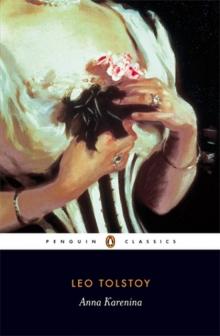 Anna Karenina
Anna Karenina Resurrection
Resurrection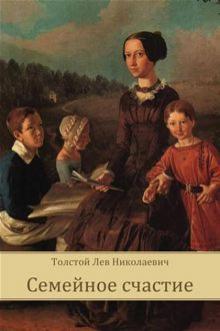 Family Happiness
Family Happiness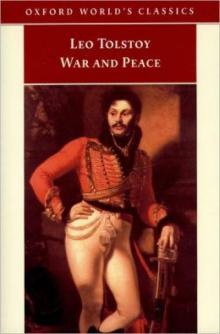 War and Peace
War and Peace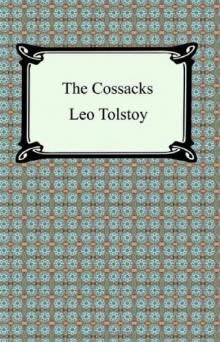 The Cossacks
The Cossacks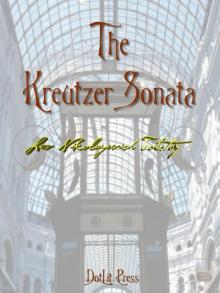 The Kreutzer Sonata
The Kreutzer Sonata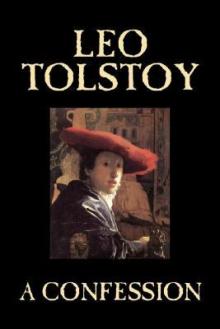 A Confession
A Confession The Kingdom of God Is Within You
The Kingdom of God Is Within You Father Sergius
Father Sergius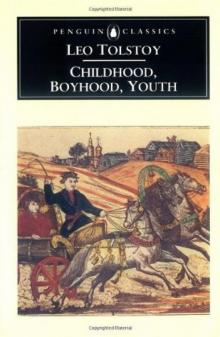 Childhood, Boyhood, Youth
Childhood, Boyhood, Youth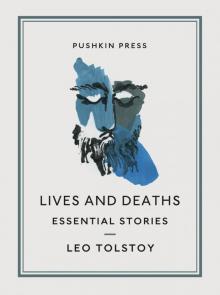 Lives and Deaths
Lives and Deaths The Devil
The Devil The Death of Ivan Ilyich and Master and Man
The Death of Ivan Ilyich and Master and Man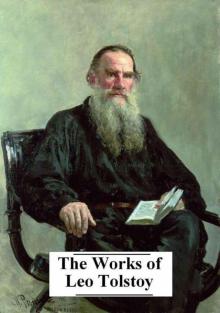 The Complete Works of Leo Tolstoy (25+ Works with active table of contents)
The Complete Works of Leo Tolstoy (25+ Works with active table of contents)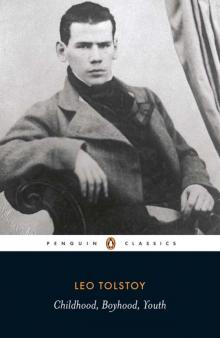 Childhood, Boyhood, Youth (Penguin ed.)
Childhood, Boyhood, Youth (Penguin ed.)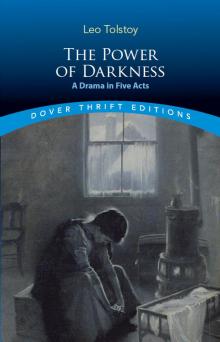 The Power of Darkness
The Power of Darkness Android Karenina
Android Karenina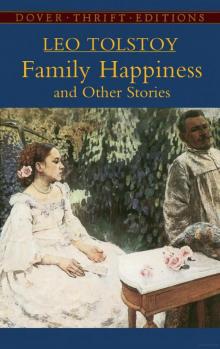 Family Happiness and Other Stories
Family Happiness and Other Stories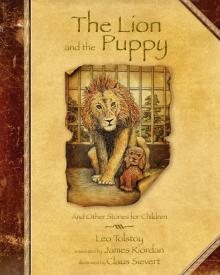 The Lion and the Puppy
The Lion and the Puppy Collected Shorter Fiction, Volume 2
Collected Shorter Fiction, Volume 2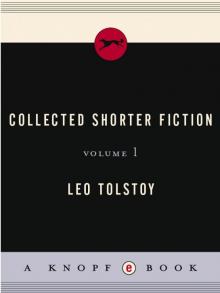 Collected Shorter Fiction, Volume 1
Collected Shorter Fiction, Volume 1